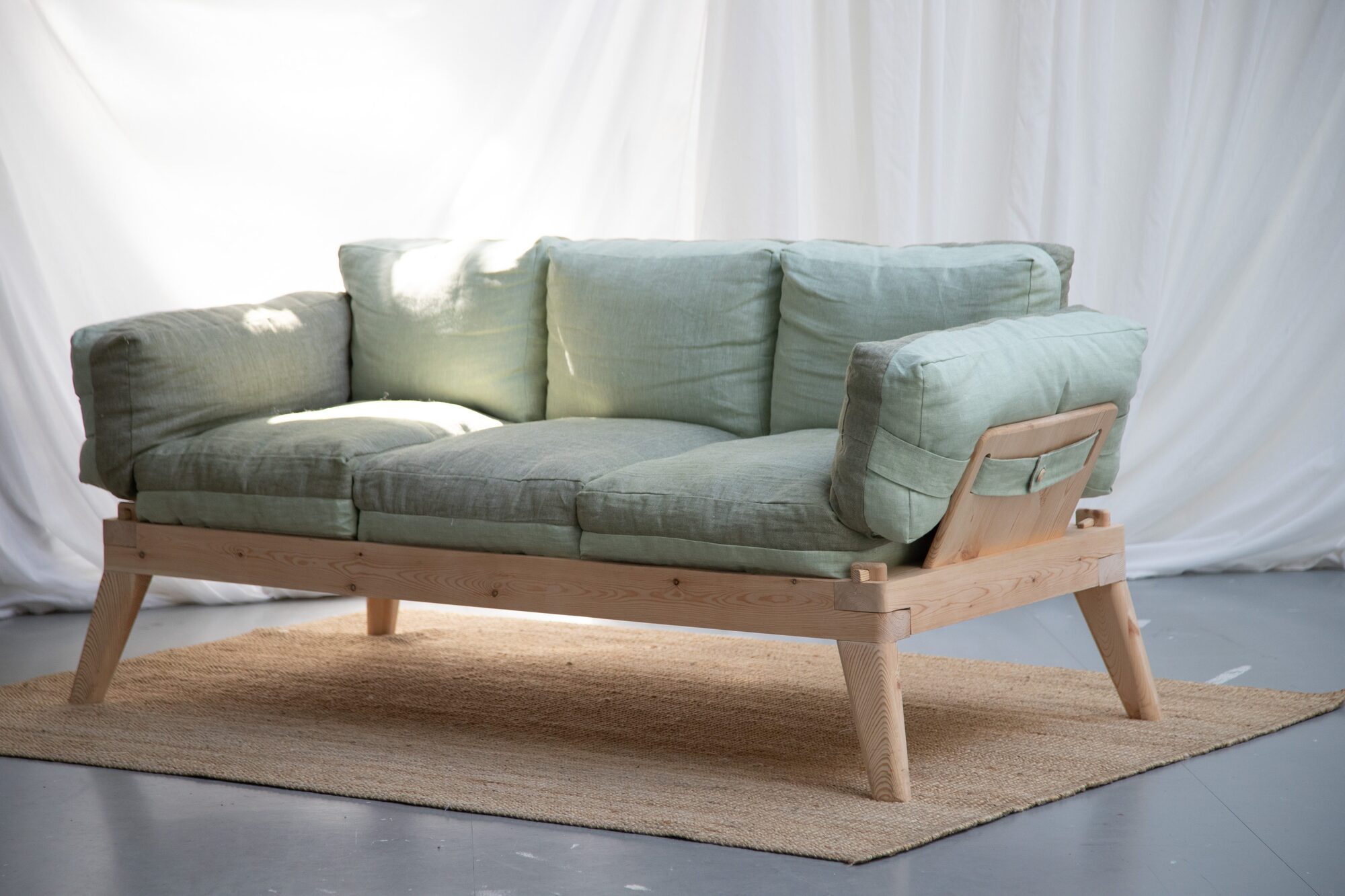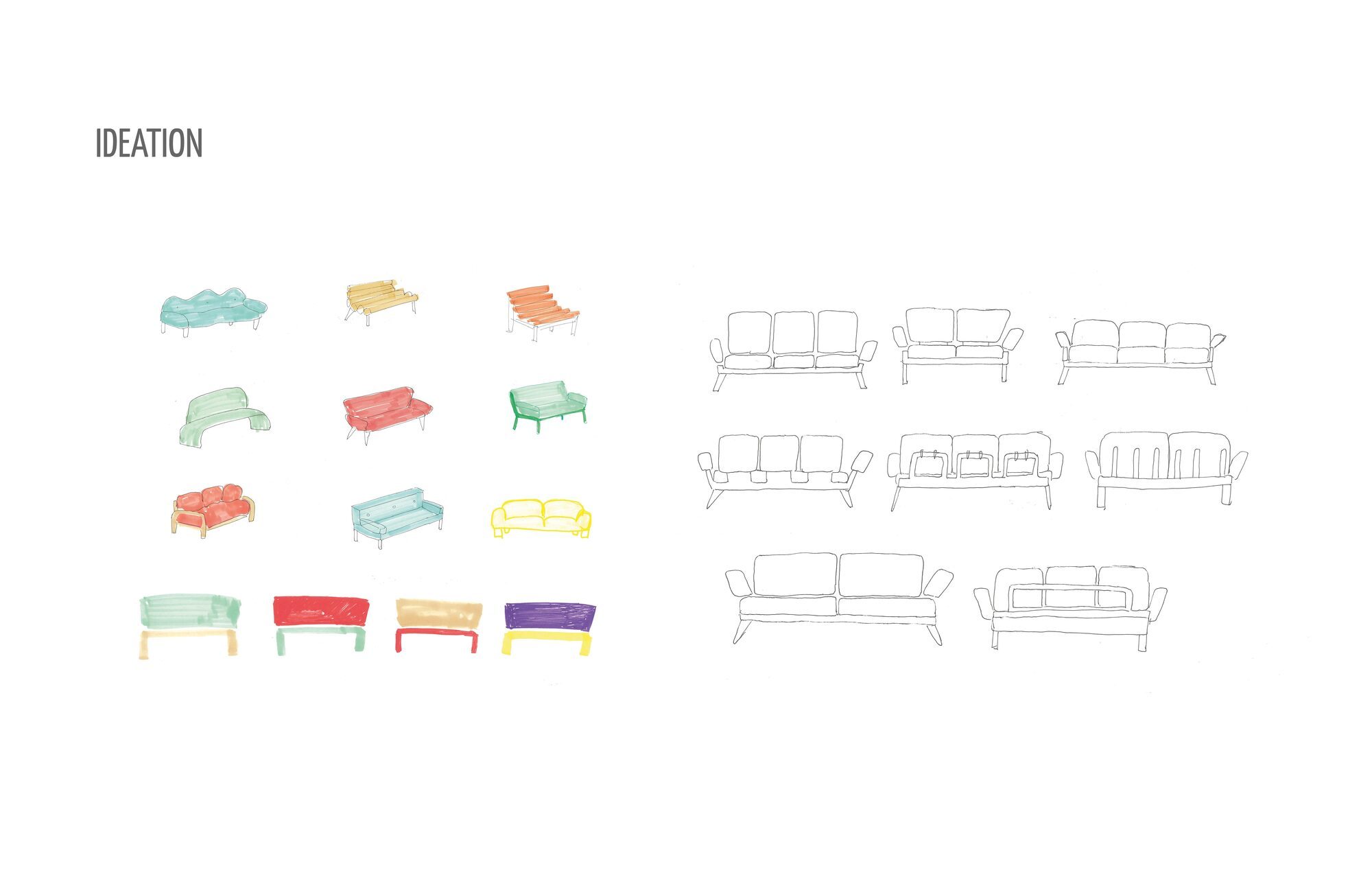The Skåne Sofa
Category: Furniture
Globalization has given us fantastic opportunities but also contributes to the systems that affect the climate the most. One of the growing environmental problems is the furniture industry, and according to The Swedish Naturvårdsverket, furniture consumption in Sweden has increased by 50% in the last ten years. I therefore decided to design a sofa to highlight this problem. As a counterpoint to globalization, I wanted to see how locally a sofa can be produced and investigate how outsourcing affects Swedish production. Inspired by Skåne and the small village I grew up in, with its local initiatives and small businesses, the project was shaped around three themes: locality, the consumer's relationship to the product and "design for disassembly". Key Aspects Locality - The sofa is made of wool and pine from the region, as well as linen from the last active weavery in Skåne. Working with an open source approach, you would also receive the blueprint for the sofa. If something were to break, apart from ordering a new part from the manufacturer, you could build it yourself or order it from a local carpenter/furniture maker. Design for disassembly - You can disassemble the sofa for easier storage or transportation. This also makes it easier to repair, as individual parts are easy to exchange, clean or mend. The wool can be repacked or washed if necessary and all cushions are turnable to enable even wear. Consumer relation - Assembling and customizing furniture has proved to make users more attached to them. The untreated wood is easy to paint, stain or resand. With the pattern you could also sew new cushions if needed. In my essay, I elaborate on the friction between profit-making, sustainability and consumerism and try to find answers to what production should look like in the future.



 Copy URL
Copy URL
 Login to Like
Login to Like 